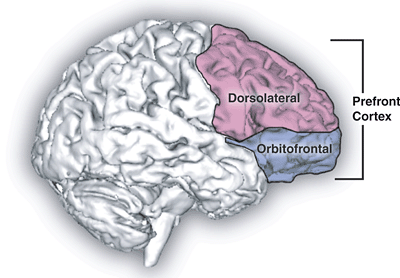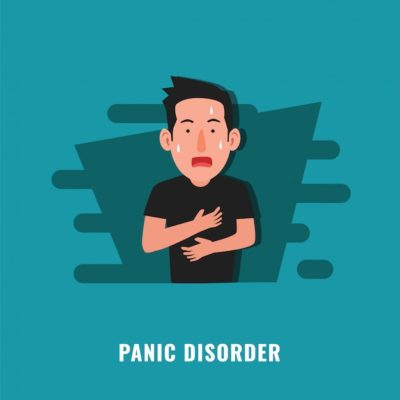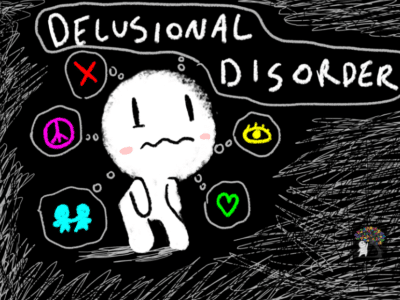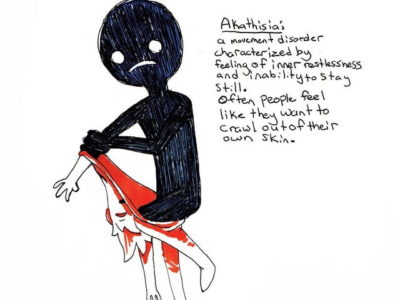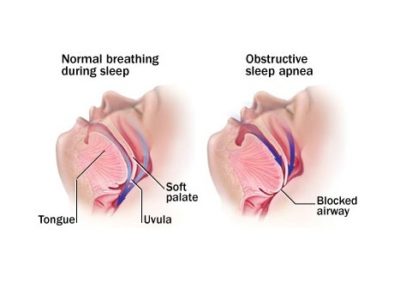
Article topic: Reactive Attachment Disorder (RAD)
Author: Aoun Sameer Ali Allobani
Editor: Ihda Mahmoud Bani Khalaf, Sadeen Eid.
Reviewer: Ethar Hazaimeh
Keywords: Reactive, Attachment, Psychiatry, abuse, neglect
Introduction
Reactive attachment disorder (RAD) is a childhood psychiatric disorder that is characterized as having an impact on how well children function socially. It can be classified as either an inhibited or a disinhibited subtype, and both have different symptoms. (1) The disinhibited subtype typically manifests as an overly friendly child who engages with strangers with ease and lacks the desire to stay with the primary caregiver, in contrast to the inhibited subtype, which is characterized by a cautious and intensely watchful person. (1)
Child abuse, neglect, and institutional care have all been cited as risk factors that can have an impact on the emergence of RAD. (1) The Diagnostic and Statistical Manual, Fifth Edition (DSM-5) categorizes RAD as a condition associated with early childhood trauma and stressors, and it is typically recognized in children under the age of five who exhibit internalizing behavior symptoms like a failure to seek comfort, a lack of positive effect, and hypervigilant states in the absence of danger. (1) RAD affects 1-2% of the population on average, (2) but actual prevalence may differ depending on where you are in the world. (2) Children in institutional care are more likely to experience neglect and maltreatment which can be measured as physical or emotional abuse, which can harm their development and health. According to estimates, 3.18 to 9.42 million children were raised in congregate care between 2001 and 2018. (3)
In children raised in this environment, maltreatment or neglect during the first three years of life increases the risk of attachment disorders like RAD and disinhibited social engagement disorder (DSED). An interdisciplinary approach is necessary for the diagnosis and treatment of RAD because it has an impact on the developing person’s physical and mental health. Several tests, including the strange situation procedure (SSP), the attachment formation rating scale, and the rating for Inhibited attachment disorder, are used because there is no specific diagnostic method for RAD. (4)
Attachment and developmental process
It is believed that genes and environment interact in a transactional process called child development. Even though different aspects of human function develop along a fairly predictable timeline, gene-environment interactions that drive change continuously mold growing children. (5) For instance, language development occurs throughout childhood, with the quickest changes becoming apparent in the preschool years. The development of expressive language follows that of receptive language in infancy. As toddlers start to speak, their vocabulary grows quickly.
Children’s abilities by the preschool years follow a fairly predictable timeline, from articulation to letter recognition. At the same time, environmental input has a big impact on how people learn to speak. For instance, maternal speech is linked to socioeconomic status and is strongly associated with vocabulary acquisition at the age of two. (6) Language-disordered children can be identified as early as the preschool years. The developmental trajectory of these kids is unusual, and the impairment brought on by language disorders can have a lasting effect and affect other spheres of functioning. (7)
The emergence of attachment is a transactional process that follows a predetermined timetable, much like the development of language. Years of research on animals led to Bowlby22’s hypothesis that human infants have a biological tendency to attach to caregivers. (8) eventually concluded that the evolution of attachment was involved. (9)
The problem with using attachment theory for developing an understanding of reactive attachment disorder.
Attachment theory describes certain behaviors displayed by infants and caregivers in response to baby stress, but it does not aim to capture the whole complexity of children’s relationships. Ainsworth’s Strange Situation was designed to examine differences in behavior, sometimes subtle, within the general population in an experimental setting, but children who have received ”grossly pathogenic care” have experienced major distortions, inconsistencies, or even the absence of healthy relationships, rather than subtle distortions of essentially normal relationships. Attachment behavior that is disorganized/disoriented (D) and RAD Inhibited Type is similar but not synonymous with: The D pattern is a measure of a specific relationship found in approximately 15% of mother-infant dyads. Because RAD behaviors can coexist with seemingly secure attachment behaviors, insecure attachment is neither required nor sufficient for RAD.(10)
Attachment and psychological function
In expounding the theory of attachment, Bowlby stated that caregivers’ recurrent reaction patterns to their children’s requests for proximity seeking or exploration influenced the child’s beliefs, feelings, and expectations about relationships. (11) Even before they reach school age, children’s early experiences can be shown to influence how they talk about close relationships, whether through play or verbally. (11,12)Thus, a child whose relationship state of mind has been influenced by disorganized attachment with a primary caregiver will exhibit some degree of uncertainty, fear, or confusion in how to perceive relationships. This, in turn, influences the child’s interactions with others. (12)
There are now various tests available to assess an individual’s mental condition regarding close connections. Story Stems is a procedure used in preschool through middle childhood in which the child is asked to act out and narrate a storyline for which the examiner has provided a standardized beginning, or stem. (13) For teenagers and adults, coding interview replies based on how the individual talks about encounters with caregivers provides insight into the individual’s mental health. (14) Recent study has revealed significant linkages between the ability to reflect on the mental states of others, a behavior known as mentalization, and attachment security in childhood. (14)
There is convincing evidence that attachment security is associated with improved emotional regulation (15) and a greater ability to perceive emotions in others and understand how those feelings may impact another person’s actions. (16) On the other hand, attachment insecurity or disorganization is associated with challenges in emotion regulation, which are also reflected in the expected corollary of executive function deficits (15,17) as well as difficulty with mentalizing. (18)
Classification of RAD behavior
Although the psychiatric classifications differ slightly, both the DSM-IV and the ICD-10 describe two types of presentation: one in which children are inhibited and exhibit contradictory social responses, and the other in which children are disinhibited. The Disinhibited Type classification evolved from institutionalization theory. (19) The context of the words ”affectionate” and ”friendly,” however, is a key misinterpretation of this description, as these behaviors are described as having a ”superficial impersonal quality,” being ”rarely reciprocated” and frequently ‘‘shallow. (20) Lack of study has severely harmed the Inhibited Type classification. It arose from observations of maltreated youngsters who had distorted affective exchanges and conflicting or conflicted social connections. (21,22) In the Strange Situation, such behaviors have been described as part of the ”disorganized/disoriented” pattern (23) which has been found in 80% of maltreated children in high-risk samples (24) and seems to be strongly linked to childhood aggression. (25)
An abused child is in a difficult circumstance because their primary attachment figure, to whom they intuitively run for comfort, is a source of terror (26,27) and this motivational conflict is assumed to underpin ”D” attachment behavior. (27) One of the most fundamental advancements in attachment theory is the concept of attachment disorganization (26) and According to Zeanah, it is the only insecure category that is nearing pathology in its own right. (19) index of RAD behaviour; ‘‘readily goes out with astrangers’’, ‘‘lack of checking back with parent’’ and ‘‘distress without comfort seeking’’. These behaviors are detectable and consistent over time. Children who exhibit these behaviors, however, do not appear to exhibit the typical hallmarks of insecure attachment, but rather a relative failure to acquire selective attachment. (28)
Zeanah has proposed alternative criteria for categorizing attachment disorders as ”non-attachment disorder” when there is no discriminated attachment figure and ”attachment disorder” when there is a discriminated attachment figure but the relationship is distorted or disturbed in several possible patterns. (19)
Managing RAD in early education
The discovery that insecurely attached toddlers catch up in attachment development even after severe deprivation when their parenting environment becomes safer and more supportive (29) suggests that supporting interpersonal ties in the classroom will help even children with RAD. (30) However, supervising children with RAD in early education is a difficult task. When teachers report more inhibited RAD symptoms in their students, they also report more internalizing and externalizing problem behavior. (30) In particular, inhibited RAD youngsters appear initially problem-free in the classroom because they make minimal requests. However, because these children do not seek help when they are distressed when their stress becomes unbearable, they may “boil over” and engage in aggressive behavior or become even more withdrawn or frozen.
It’s easy to see how aggressive responses to stress might trigger insecure attachment cycles, but withdrawn or frozen responses to stress can also trigger these insecure cycles, prompting teachers to strive even more to encourage the child’s social participation. Communication is normally elicited by the child’s communicative lead in healthy attachment cycles. (31) The teacher’s efforts to direct communication may be viewed as intrusive by the youngster. This well-intentioned teacher conduct is likely to activate or strengthen the child’s negative expectations about assistance, triggering an insecure loop that encourages the child to further isolate himself/herself from the instructor. Communication is usually elicited by the child’s communicative lead in healthy attachment cycles. (32)
Conclusion
In conclusion, Reactive Attachment Disorder (RAD) is a complex childhood psychiatric condition that profoundly influences a child’s social functioning. It is characterized by distinct subtypes, the disinhibited and inhibited, each with its unique set of symptoms. Risk factors such as child abuse, neglect, and institutional care can significantly contribute to the development of RAD, emphasizing the importance of recognizing and addressing early childhood trauma and stressors. The prevalence of RAD varies across regions, but it is estimated to affect a significant portion of the population.
The absence of a specific diagnostic method for RAD necessitates the use of various assessment tools, including the Strange Situation Procedure (SSP), the Attachment Formation Rating Scale, and the rating for Inhibited Attachment Disorder. These tools aid in understanding and addressing the complexities of RAD, highlighting the need for continued research and clinical attention to this important childhood psychiatric condition.


